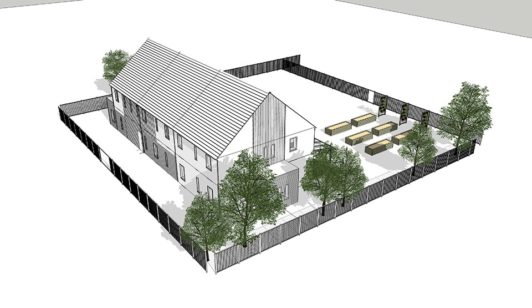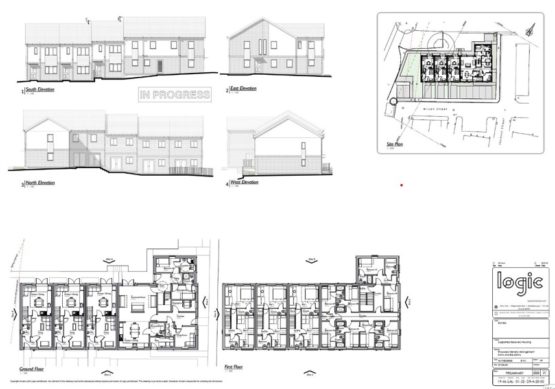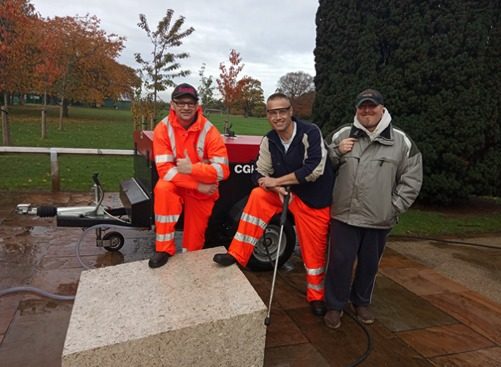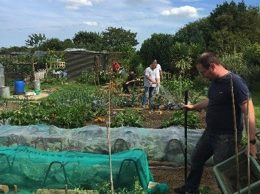South Bank CLT Case Study
An Oxford House typically provides accommodation for 8-12 people at any one time. Evaluation of the model identified 14 months as the optimum minimum length of residency to indicate sustainable recovery (7 years plus). Residents benefit directly from quality accommodation, which is usually difficult for this client group to secure and maintain, due to their complex
personal, and financial, histories. The invaluable peer support, and 12-step life programme, provided alongside the accommodation, nurtures long-term
recovery. As more experienced residents move on to open new houses, the model expands, pyramid style, providing the same benefits to increasing numbers.

Self generated funds
A proportion of rental income and self-generated funds pay for the Outreach & Development Support Service which works to engage potential new residents. In this way, the model supports the maximum number of people, while maintaining optimum occupancy of the Oxford Houses.

Support and encourage others
The model also creates positive impacts for residents living in the immediate communities around the Oxford Houses this 'second-order effect' sees residents support and encourage others through their 12-step recovery to practice the values of 'serving' their community. The community around a house benefits from a much-improved environment, often including gardens and allotments created by residents. Residents also volunteer in the local community and raise money for charities through sponsored events.
This ethos is an integral part of new, and future, Oxford House developments; benefitting both the wider community, and providing house residents, previously socially excluded but rebuild links with community and
where possible family.

About the properties
Each Oxford House resident gets an individual self-contained unit; with a bed-sit room; cooking facilities; and an en-suite shower room. In addition, there are communal areas for cooking; utilities; living; dining; and
space to hold the peer-led house meetings, which are integral to Oxford House living. The model works on a peer-led basis, with residents providing support to each other to maintain abstinent recovery and prevent relapse.
Residents agree to strict terms of conduct on entry to Oxford House, strict adherence to abstinence, attendance at recovery meetings, commitment to a housework rota and all residents need to be in employment, training, or taking part in additional community volunteering. Every resident needs to begin paying back debts they have accrued and must offer unconditional support to other residents. Any breaches of rules are dealt with by house meetings, with conduct agreements or expulsion from the house being decided by the house residents.

Living Sober CIC
Having spent years offering an Abstinence based, Peer Supported, Recovery Service to severely dependent drinkers over across Redcar & Cleveland, Living Sober CIC identified access to and ability to maintain tenancies was a serious barrier to sustainable recovery so sought to develop its own housing offer. A Sober Home initiative, Oxford House, a model developed with support from Oxford House Inc. in the USA where they have been operating the model since the mid 70’s opened
in 2010 using 6 properties made available by local RP Coast & Country Housing. The project was hugely successful but struggled to secure additional bed capacity.

In 2014 a partnership between Redcar & Cleveland Borough Council, Coast & Country Housing and Living Sober CIC were successful in securing £200,000 Public Health England capital funding to supplement existing Empty Homes funding to turn an old Public House into additional Oxford House capacity. Planning issues blighted the project and in 2016 Coast & Country took the decision to withdraw from the partnership. Redcar & Cleveland Development Agency, who had been offering support to Living Sober looked to find alternative partners to allow the project to continue but after a number
of false starts and with the launch of CLH funding, took the decision to become a Registered Provider to make sure the development of a new Oxford House could be secured.
In parallel with the RP application new sites were sought but discounted repeatedly due to objections, until a local elected member took the brave decision to stand up to initial objections and got behind the idea of a new build development in South Bank. Having visited the original house and met with residents’ local objections disappeared. The local community forum identified the old Cromwell Rd school as a potential development site and work began designing a purpose-built house that would compliment the local area. Thus, began the 2 year journey to the commissioning, build and handover of Cromwell House, a purpose build 8 bed development.
Women in recovery
Living Sober and RCVDA are currently developing a new purpose built Oxford House to cater for women in recovery. This new-build incorporates additional flexibility within the design to allow for women with children or fighting to have them returned to take up residence in an abstinent
peer supported environment without having to make a choice between their recovery or their children. This new development Angela’s House named after a mother of two who died in her mid-twenties battling addiction whilst struggling to
maintain contact with her two children.

See more of our projects